Talparo RC on a mission to preserve patois
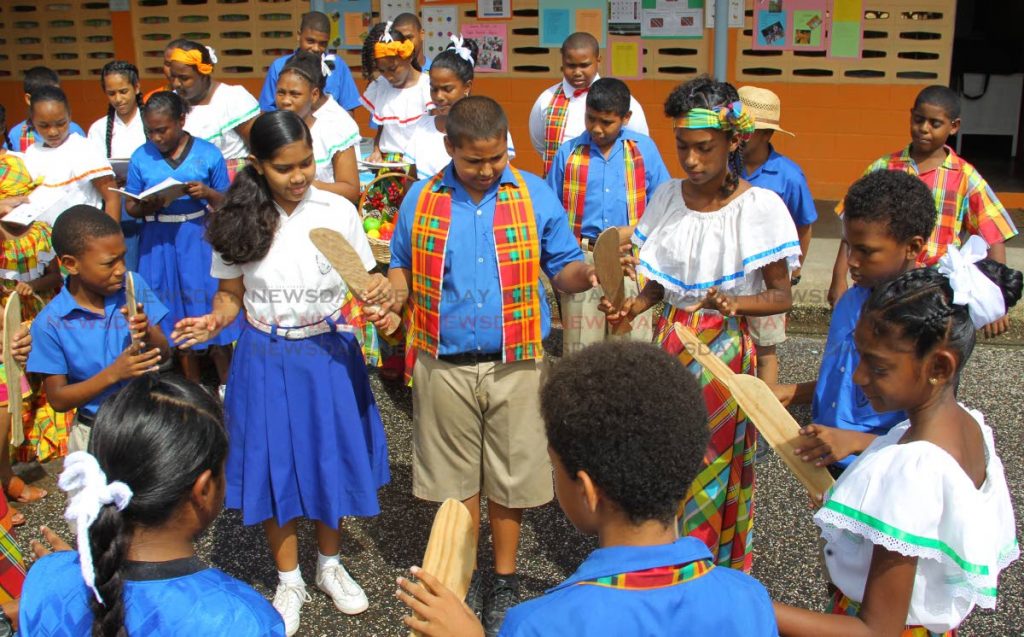
ON any given day we may spot a corbeau in the sky or a big crapaud in our yards. While those are not usually pleasant sights, most will agree that a plate of pelau with fresh slices of zaboca is a much more pleasing view.
Did anything seem unusual about those two sentences? If you understood them with ease, then congratulations, you understood patois. After a visit to the Talparo RC school in Talparo Village, you might be surprised with just how much more patois you know.
Corbeau, crapaud, pelau and zaboca are words that form part of our daily vocabulary but are borrowed from patois.
Patois is described as the form of a language spoken by people in a particular area that is different from the standard language of the country.
Under the guidance of teacher Michelle Mora-Foderingham, students and staff of Talparo RC are on a mission to bring awareness to patois and revive the language. When Newsday visited the school, signs of this effort was clear.
Visitors are greeted by a large “Welcome” sign written in patois and all areas of the school are identified by signs written in both English and patois. There is also a patois wall with an array of patois words and resources donated by UWI patois teacher Nnamdi Hodge.
Asked about the initiative, Mora-Foderingham said, “In our everyday speaking we use a lot of words that have come from patois. It is a part of us, but we don’t realise. It is part of our culture and heritage.”
She added, “People have developed a disconnect. If we do not teach this language it will die.”
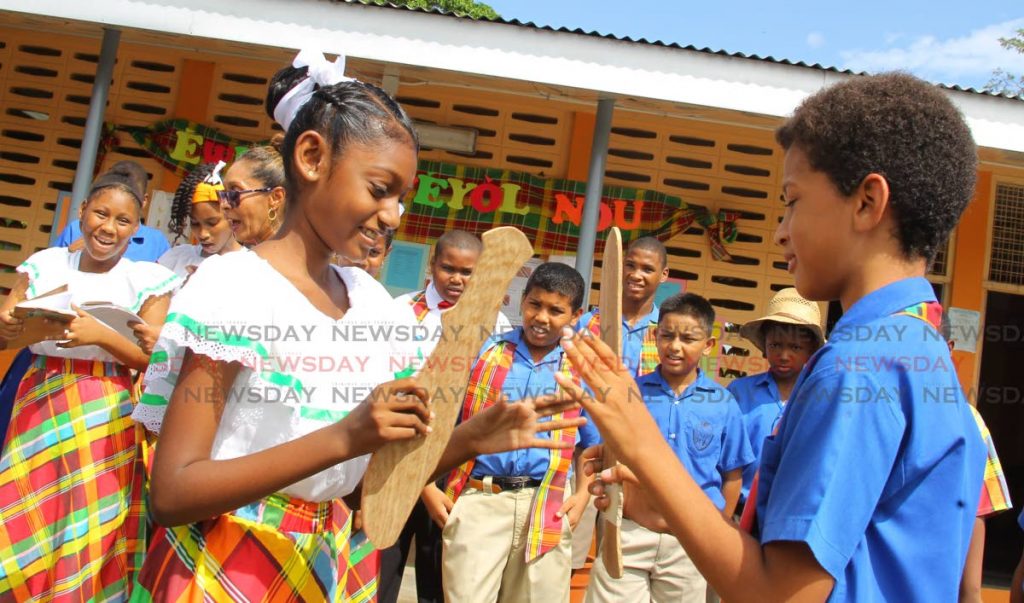
Recognising the importance of preserving TT’s culture inspired Mora-Foderingham to develop a patois programme in the school. It is still in its developing stages, and she is working to expand it in January 2020.
“Patois seems like a foreign language and the children would believe that, but it really isn’t. We are starting with the simple things they know. On our patois wall there are words like ‘crapaud’ and ‘corbeau’ to show them we already speak it. This is where we are starting, and we will be moving onto other things.”
Students can also say their names, ages and count in patois. They have also been taught traditional patois songs, through which they have grasped more vocabulary. Students in the patois programme have performed at events such as UWI Creole Day 2019 and in 2017 assisted the Talparo RC church in its annual mass read in patois.
Mora-Foderingham said there has been positive feedback from parents and guardians. On occasion, students have told Mora-Foderingham that their parents and grandparents get excited when the students speak patois, as they recognise words from years ago.
“There is still a cultural and social connection to the language, so there is an excitement,” she said.
The effort is also geared at expanding the students’ educational experience. Mora-Foderingham said, “Education is not just mathematics and language arts. Language is a part of language arts and it’s nice for the students to be exposed to other languages. The students never know who they will meet. They may meet people from St Lucia and Dominica, and they’ll be able to converse.”
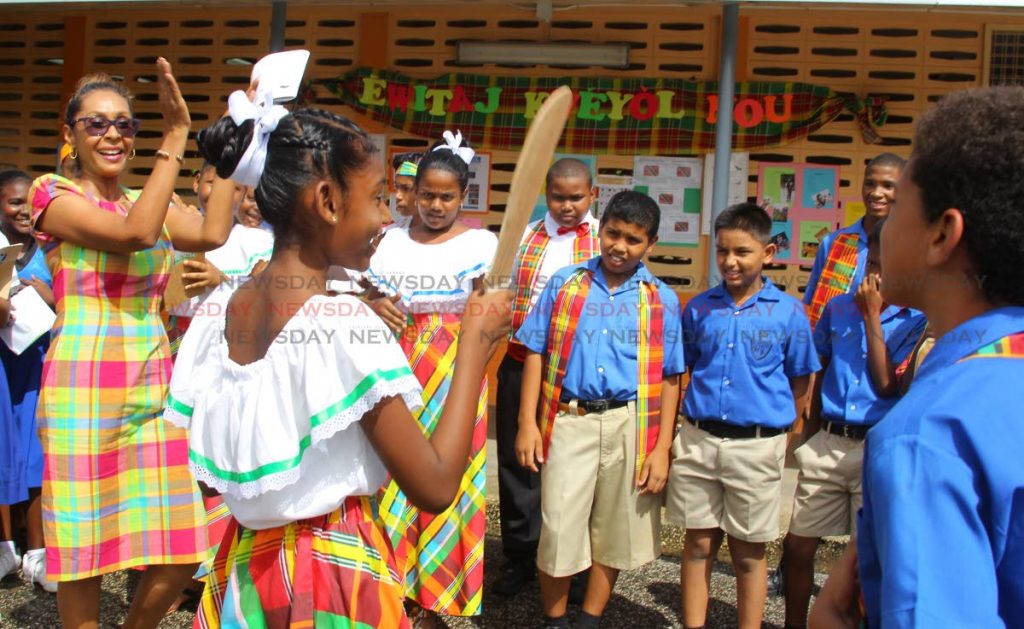
Standard four student Sherriah Hernandez is involved in the patois programme and was excited to share what she learnt.
“I have learnt how to ask people different questions, how to greet them and how to count.”
Asked to describe her time at the school, Hernandez said, “It is fun. The teachers plan a lot of fun stuff with us.”
Standard five student Fernando Ram also shared his excitement, saying, “I enjoy my schoolwork, learning patois, helping others to learn and helping others to do good in their test. In patois, I have learnt to ask people questions and show them how to count from one to 100.”
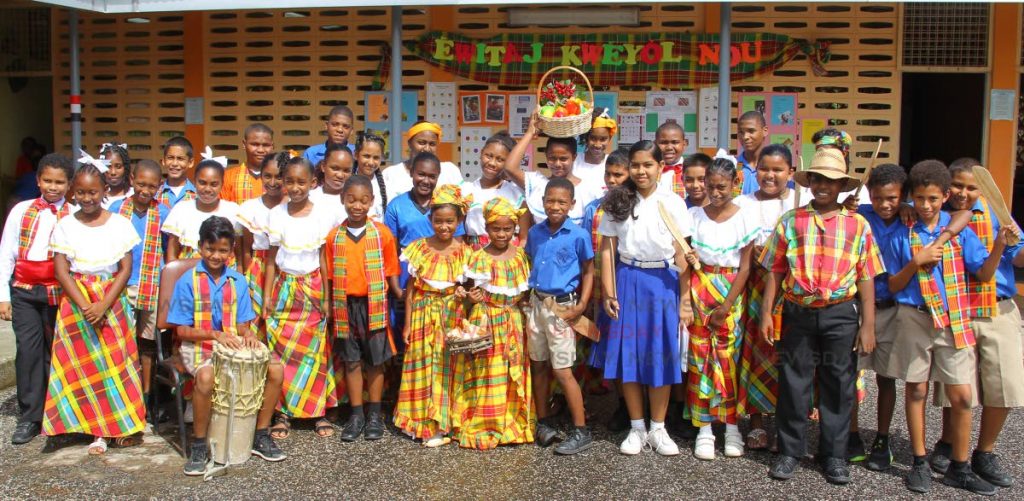 Thanks to the programme Ram is excited to learn a new language. “Patois is a form of French and it makes me happy to learn about other languages and see how they speak it.”
Thanks to the programme Ram is excited to learn a new language. “Patois is a form of French and it makes me happy to learn about other languages and see how they speak it.”
Acting principal Gemma Cockburn supports the effort. She said, “Patois is extremely important because it is part of our heritage and culture. In some areas, patois is still spoken. The best way to keep the patois alive is for the young children to learn so they can teach their children and it can be passed down from generation to generation.”
Cockburn added, “In my opinion, having command of a second language is always an asset.
“We try to develop our children holistically in all the areas of the curriculum and work towards developing the children to their fullest potential by tapping into their different assets.”
Standard five student Aaliyah Jadoonanan was asked to give TT a brief lesson in patois. Jadoonanan said, “Ki laj ou? (How old are you?),” to which she replied: "Mwen tini dis lanne (I am ten years old).”
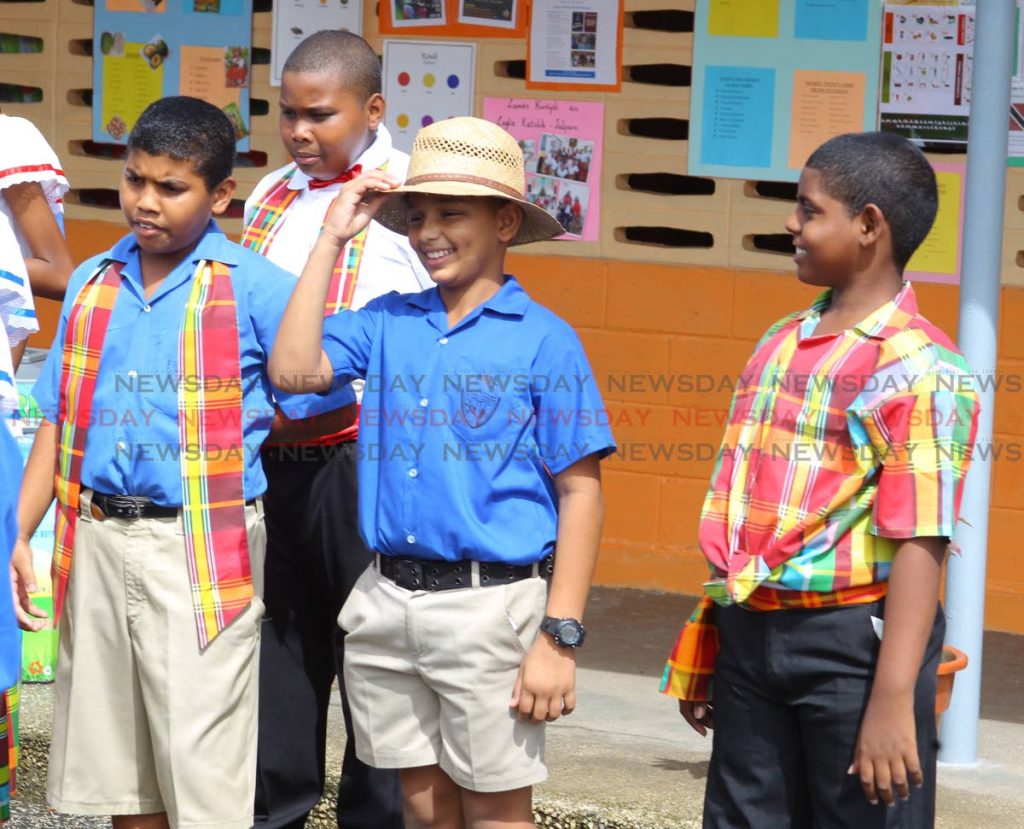 Jadoonanan added, “I enjoy going to different places for events and being able to talk to different people in patois.”
Jadoonanan added, “I enjoy going to different places for events and being able to talk to different people in patois.”
Asked to describe Talparo RC in three words, she said, “Interesting, fun and unique.”


Comments
"Talparo RC on a mission to preserve patois"